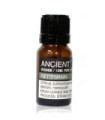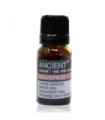Scientific Name: Cinnamomum Zeylanicum
Plant Part Used: Twigs & Leaves
Origin: Sri Lanka
Method of Extraction: Steam Distillation
Cinnamon Essential Oil is procured through steam distillation of the Cinnamomum zeylanicum, also referred to as true cinnamon or Ceylon cinnamon. Two varieties of essential oils are extracted: one from the leaves, which is softer, yellow to light brown, and most frequently used in aromatherapy; and another from the bark, which is darker brown and typically not chosen for aromatherapy.
Cinnamon oil, with its potent antiseptic qualities, provides a soothing effect. When burnt in an oil burner, it's believed to alleviate colds and bronchitis, and uplift depression. It's utilized to help with bronchitis, diarrhoea, chills, infections, flu, rheumatism and arthritis when added to bath water or mixed into a massage oil. It mitigates nausea and vomiting. It invigorates the glandular system and hence diminishes menstrual discomfort. Pregnant women should avoid the leaf oil. The bark oil is extremely potent and should only be used diluted, under skilled supervision.
The cinnamon tree, native to the Indian subcontinent, has been a valuable trade item for centuries between India, China, and Egypt. The Western world long considered the origin of cinnamon a mystery. According to Herodotus and other authors, Arabia was the cinnamon source. As per the tale, giant Cinnamon birds gathered cinnamon sticks from a mysterious location where cinnamon trees flourished. The Arabs then deceived the birds and obtained the cinnamon. This belief persisted until 1310 in Byzantium.






